With bases established at the whaling station on Deception Island (Base B) and at Port Lockroy (Base A) the members of Operation Tabarin set about settling into their new surroundings. A routine began to take shape with chores, food and recreation playing a key role in the daily life of the bases.
Diet was critical to any Antarctic base and the value of a good cook could not be underestimated. Tom Berry, a veteran of the RRS Discovery II, demonstrated his culinary abilities during the first morning ashore at Port Lockroy in 1944:
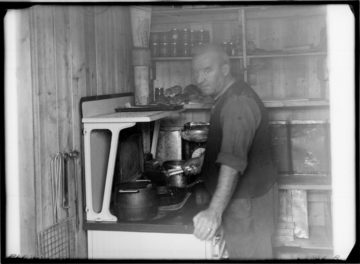
“Thursday, 17 Feb. We were roused out of our bunks [aboard the SS Fitzroy] at 0300 hrs., and, getting the last of our personal gear together, we got into the motor launch and went ashore to our base, where Ashton and others pressed on with laying the floor of the hut. The weather was miserable, with driving sleet and snow, with people and stores getting soaked. By 0900 hrs. the floor was complete; Berry, in the tiny shelter, contrived to produce an excellent breakfast of bacon and eggs and bread and jam. After eating we all felt utterly exhausted, and so put our mattresses and blankets on the floor and turned in fully clothed. We slept for three hours, then got up and had another meal of bacon and eggs, sausages and tea; we still felt tired, but by this time most of the vital work had been done, and we could take things more easily.”
Source: Ivan M. Lamb. (Archives ref: AD6/1A/1944/B)
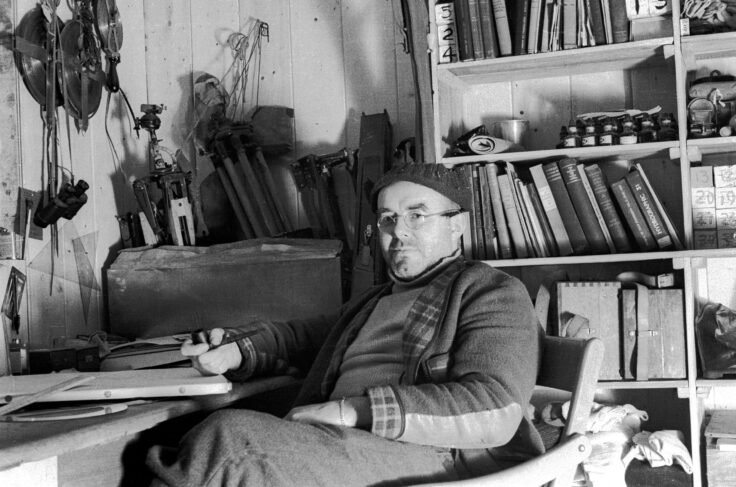
Andrew Taylor, expedition commander during 1945/1946, reflected later on Berry’s vital contribution to Tabarin:
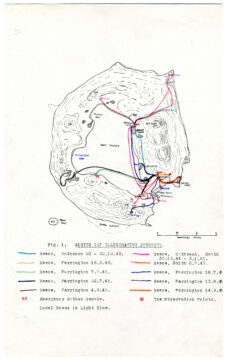
William Flett described local sources of food and recreation available at Deception Island in his base commander’s report written in early 1945:
“In addition to the stores of food which were imported into the island, local natural resources were frequently used to supplement the larder. Steak and livers of Weddell seals provided tasty meals and the flesh of penguins and shags also furnished palatable meat. Nor was the chance of fish-diet neglected. The most profitable fishing-ground was at the Bellows, where fairly good catches were made of “Rock-Cod” or Notothenia, and an occasional Ice-fish.
In mid-winter, during the long evenings, the dart-board, piquet board, and playing cards were frequently in evidence. The use of the gramophone was somewhat circumscribed by the small stock of records, owing to the removal of a large number, due to a misunderstanding.
All members of the party participated in ski-ing, Layther being especially enthusiastic and enterprising. Unfortunately an accident to Smith curtailed this particular activity for a short time, as it seemed to be tacitly agreed that a casualty roll
in excess of one, at any one time, should be avoided, if possible. Ski-ing conditions were seldom very good owing to the almost continuous hard glaze of the surface of the snow, due to partial thawing, induced apparently by subterranean heat, as well as solar radiation, and subsequent freezing. Also the presence of huge boulders in the most unexpected places and the exasperating frequency of the outcropping of black ash, introduced a disproportionately large number of hazards in most ski-runs.
For the benefit of future residents, it might be added that, one of the very shallow crater lakes North of Whalers’ Bay provided a reasonably good skating surface, when the snow was swept away.”
Read William Flett’s full base commander’s report here.
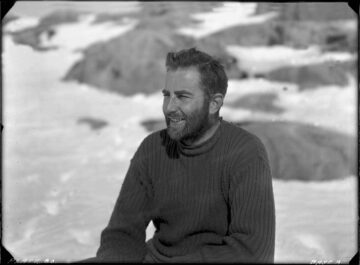
James “Fram” Farrington, the expedition’s chief radio operator, served on Deception Island during his second year. He describes daily routine on a small base:
Film: Collecting buckets of ice using whale vertebra as a yoke, Base A, 1944. (Archives ref: AD6/16/1944/1.2)
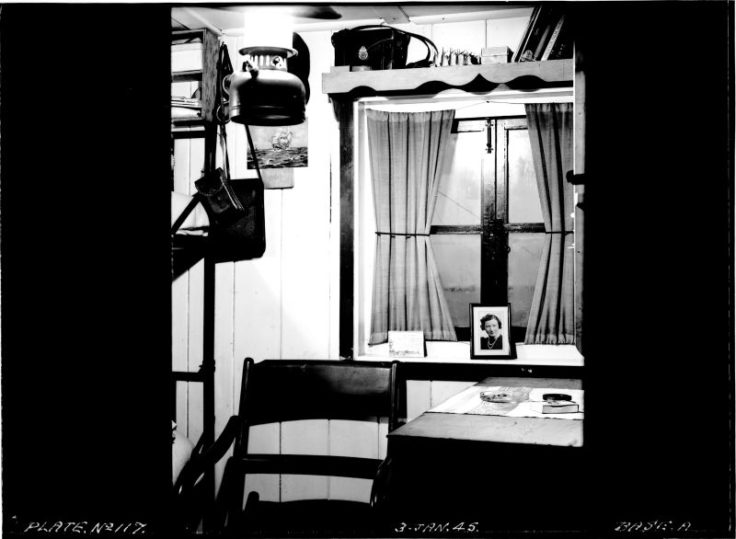
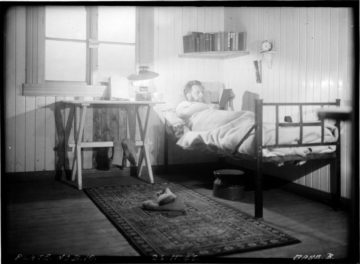
Medical officer Eric Back was careful to ration his reading material from home:
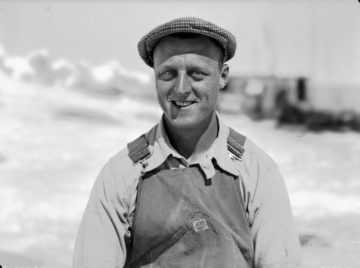
Stores officer Gwion Davies recalled the close relationship the winterers developed with local wildlife and a not-so-local pig:
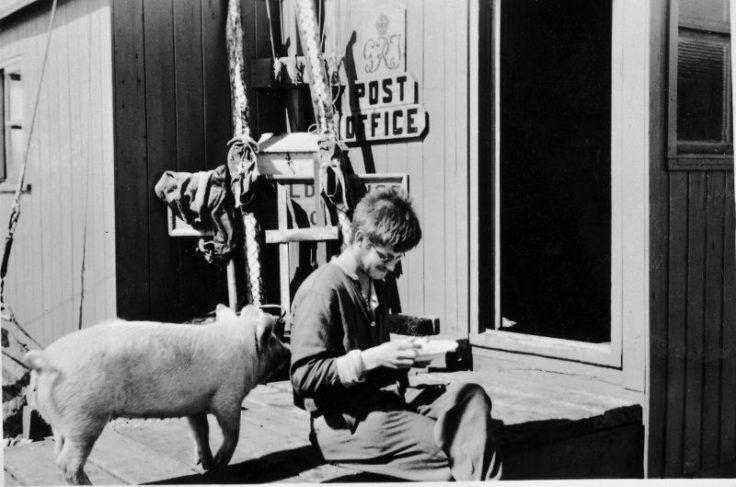
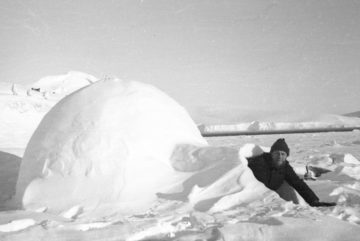
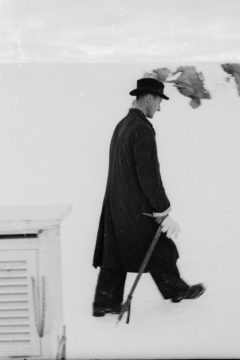
Botanist Ivan Lamb took an interest in igloo construction and Davies quickly followed suit: